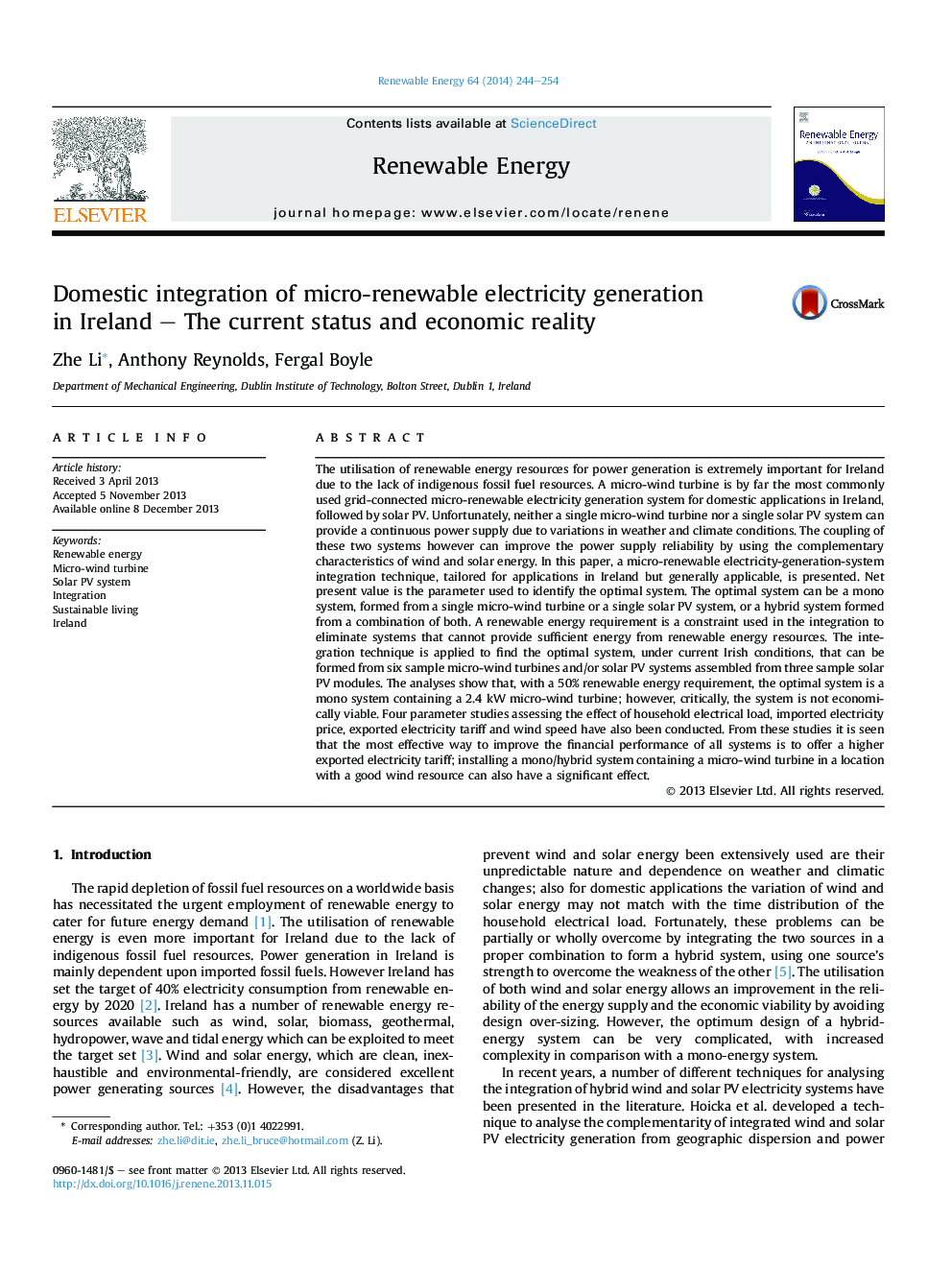| Article ID | Journal | Published Year | Pages | File Type |
|---|---|---|---|---|
| 300095 | Renewable Energy | 2014 | 11 Pages |
•A novel generally-applicable technique is developed for the integration of a micro-renewable electricity generation system.•The integration technique is generally applicable but has been deployed for Irish application.•The integration technique considers technical and economical constraints and directives, and is based on net present value.•The integration technique is applied to find the optimal system under current Irish conditions.•An assessment of the effect of different parameters has been completed using the developed integration technique.
The utilisation of renewable energy resources for power generation is extremely important for Ireland due to the lack of indigenous fossil fuel resources. A micro-wind turbine is by far the most commonly used grid-connected micro-renewable electricity generation system for domestic applications in Ireland, followed by solar PV. Unfortunately, neither a single micro-wind turbine nor a single solar PV system can provide a continuous power supply due to variations in weather and climate conditions. The coupling of these two systems however can improve the power supply reliability by using the complementary characteristics of wind and solar energy. In this paper, a micro-renewable electricity-generation-system integration technique, tailored for applications in Ireland but generally applicable, is presented. Net present value is the parameter used to identify the optimal system. The optimal system can be a mono system, formed from a single micro-wind turbine or a single solar PV system, or a hybrid system formed from a combination of both. A renewable energy requirement is a constraint used in the integration to eliminate systems that cannot provide sufficient energy from renewable energy resources. The integration technique is applied to find the optimal system, under current Irish conditions, that can be formed from six sample micro-wind turbines and/or solar PV systems assembled from three sample solar PV modules. The analyses show that, with a 50% renewable energy requirement, the optimal system is a mono system containing a 2.4 kW micro-wind turbine; however, critically, the system is not economically viable. Four parameter studies assessing the effect of household electrical load, imported electricity price, exported electricity tariff and wind speed have also been conducted. From these studies it is seen that the most effective way to improve the financial performance of all systems is to offer a higher exported electricity tariff; installing a mono/hybrid system containing a micro-wind turbine in a location with a good wind resource can also have a significant effect.
